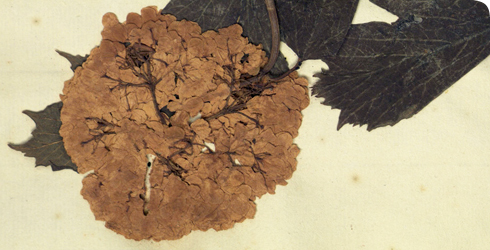The George Clifford Herbarium
The herbarium contains over 3,000 specimens collected by George Clifford (1685-1760), a wealthy Anglo-Dutch merchant.
The Herbarium includes plants that were newly cultivated in Europe at the time of collection, as well as specimens from collectors around the world.
Collection significance
The collection has a significant connection with Carl Linnaeus (1707-1778), the 'father of modern botany' and deviser of the binomial system of scientific naming.
Linnaeus worked at Clifford's estate near Haarlem between 1735 and 1737. Linnaeus described the plants growing there and wrote the Hortus Cliffortianus, in some ways a precursor of his Species Plantarum (1753). Many of the plants in Clifford's herbarium are type specimens for Linnaean names.
-

Access the Clifford Herbarium database
Search for specimens and browse images of the Clifford Herbarium.
-

About the database and images
How the database was created, and tips on use.
-

About George Clifford
Find out more about George Clifford III, a wealthy banking heir with a passion for plants and natural history.
-

About the Clifford Herbarium
How Clifford established his herbarium, and how it made its way to the Museum.
-

Linnaeus and Hortus Cliffortianus
Discover how Clifford's herbarium gave Linnaeus the opportunity to create a classification system.
-

Bibliography and acknowledgments
Resources and acknowledgements for the building of the database.
